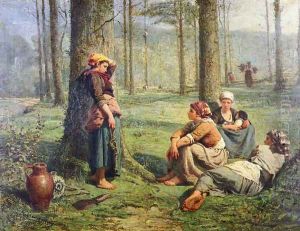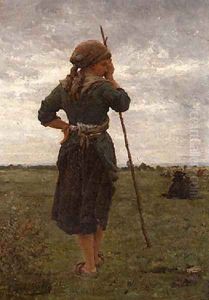Pierre Celestin Billet Paintings
Pierre Célestin Billet was a French painter born on September 19, 1837, in Périgueux, France. Although not as widely recognized as some of his contemporaries, Billet made significant contributions to the art world during the 19th century, particularly in the realm of still life and portrait painting. He developed his skills in an era that saw the transition from traditional academic art to the burgeoning movements of Impressionism and Post-Impressionism, yet he managed to maintain a distinctive style that was rooted in meticulous attention to detail and a profound appreciation for the natural world.
Billet's education in art began at a young age, following the traditional path of studying under established painters and attending a reputable art school. His talent and dedication to his craft were evident early on, and he soon garnered attention from the art community in France. Billet's work was characterized by its realism and sensitivity to the subtleties of light and shadow, a quality that made his still lifes particularly captivating. He had a unique ability to imbue ordinary objects with a sense of dignity and beauty, making his compositions stand out among the works of his peers.
Throughout his career, Billet exhibited his work in several prestigious venues, including the Paris Salon, where he received accolades for his contributions to French art. His paintings were celebrated for their technical precision and the emotional depth they conveyed, qualities that resonated with audiences and critics alike. Billet's portraits, too, were highly regarded, showcasing his skill in capturing the essence of his subjects with empathy and insight.
Despite his success, Pierre Célestin Billet remained relatively modest about his achievements and dedicated to his artistic pursuits until his death on December 31, 1909. Today, his works are held in various collections and museums, appreciated by those who seek to understand the evolution of French art in the 19th century. Billet's legacy, though perhaps not as widely recognized as that of some of his contemporaries, is a testament to the enduring appeal of classical artistry and the power of observation and skill in the creation of visual art.



